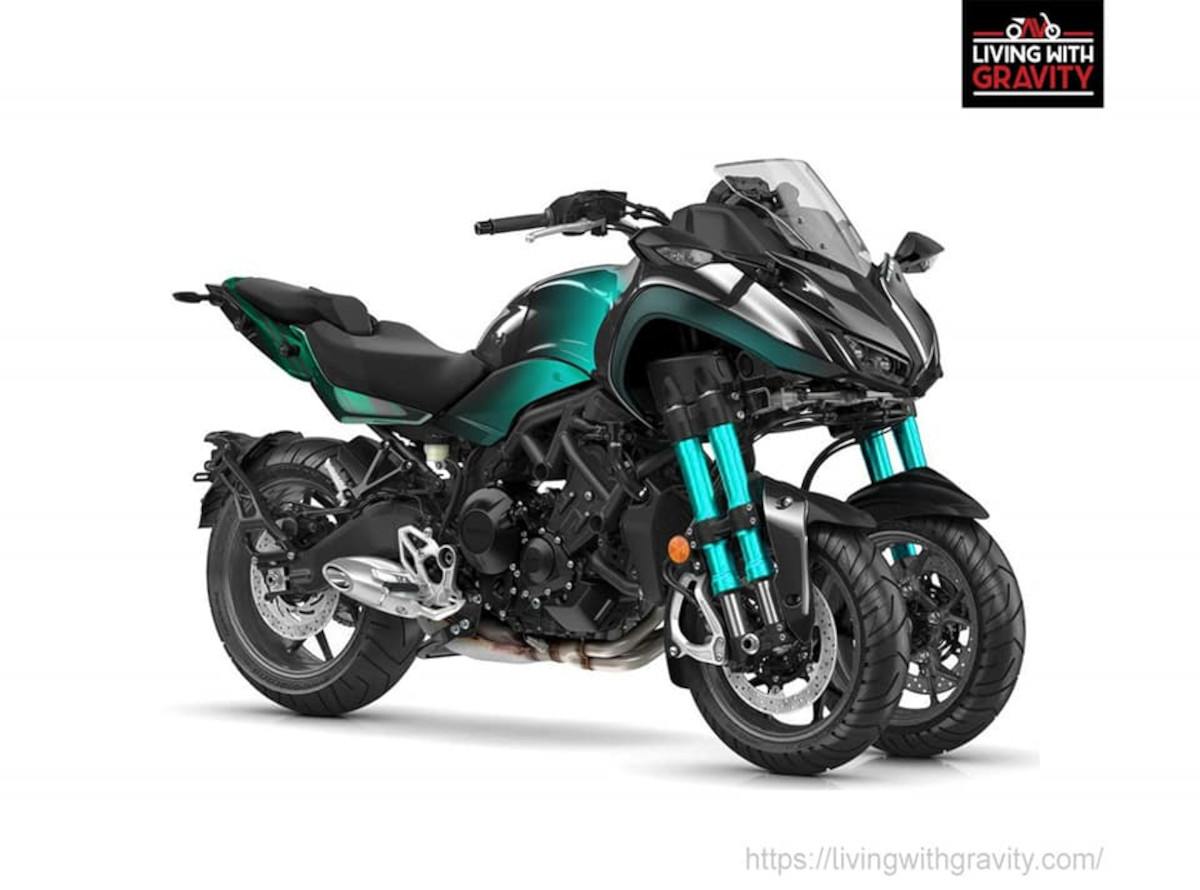In 2007 little did we know what Yamaha had in mind and to much surprise, they unveiled the Tesseract 4-wheeled LMW concept.
The saying ‘ Your past success is a foundation for future success ‘ implies what Yamaha is doing since the 1970s.
- 2021 Yamaha Axis Z, specs, price and more
- Yamaha plans to discontinue its retro novelty SR400
- 2021 Jawa 42 spied
And to see what is next, we went on to push the past button.
Story begins
In 1970, the Yamaha design team set up a design studio in Harajuku, the Centre of fashion and design in Tokyo.

Harajuku, Japan. The story begins here.
To come up with the original and innovative concepts, the designers looked towards the future of motorcycle. They were searching for what an entirely new vehicle would look.
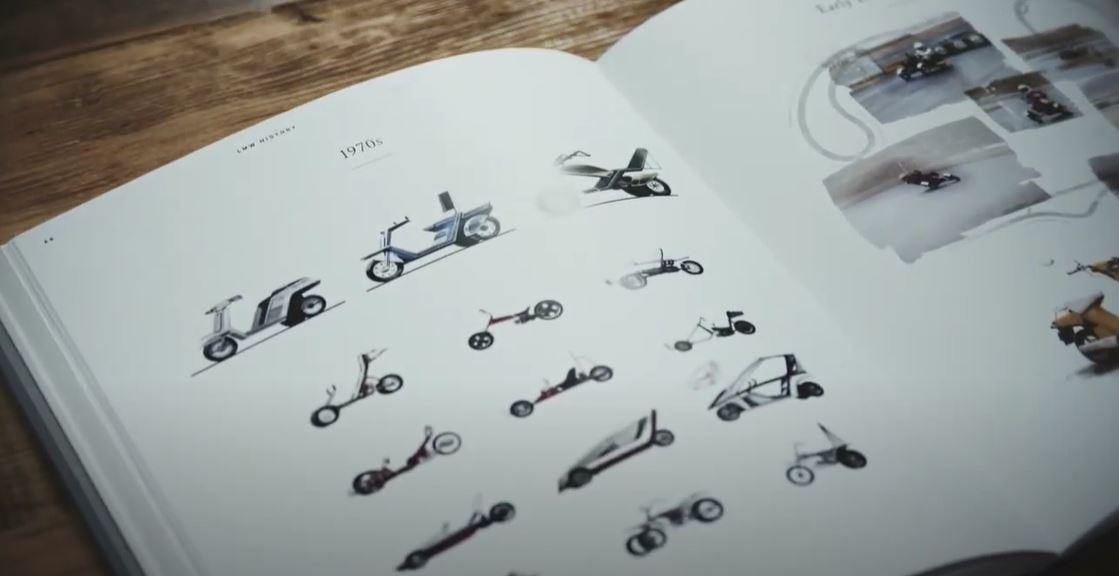
Early Yamaha LMW concepts
As they worked concepts using different wheels emerged and even led to R&D to verify the feasibility.
The new beginning
It begins in the late 1980s with the small single-seater scooter ‘Passol’. The name Passol represents innovation, independence and determination.
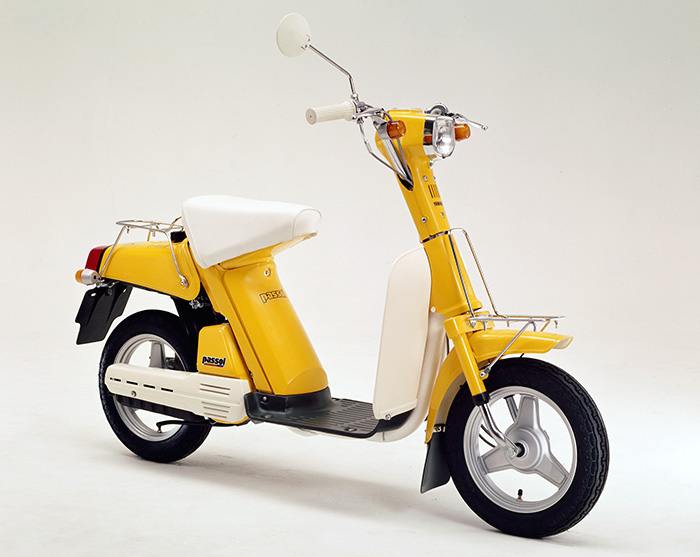
1977 Passol
Within no time the ‘Passol’ went on to become famous with women riders.
Later in 2002 Yamaha converted the standard Passol in an electric scooter with a brushless dc electric wheel hub motor with an 0.58 kW (0.78 hp).

Electric Passol
In 2007, Yamaha had to discontinue the electric Passol.
However, using standard Passol as a base, Yamaha engineers wanted to create something new.
Three instead of two
And Yamaha R&D team came with a novel idea of converting two-wheeler Passol into a three-wheeler with two front wheels.
In the course of building prototype Yamaha had repeated track tests, Yamaha discovered something new.
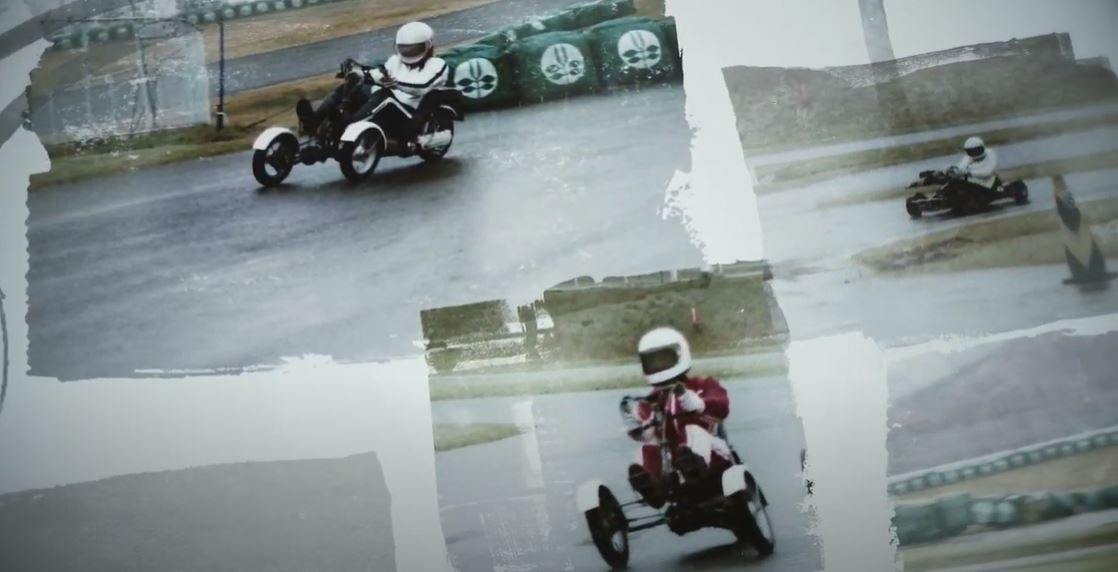
Early prototype.
Having the two front wheels while riding the vehicle retained its agile handling character and gained an incredible taste of stability.
By this time, Yamaha had discovered the possibility of the new leaning multi-wheeled vehicle that could redefine the motorcycling.

In 1977 Yamaha started the R&D in LMW.
Yamaha later analysed the data and carried multiple tests to study the suspension and steering system’s interrelated movement for the two front wheels when leaning over.
The three-wheel phenomenon today is widely known as leaning multi-wheeled vehicles (LMV).
Later in 1976 Yamaha files the patent for its LMW technology.


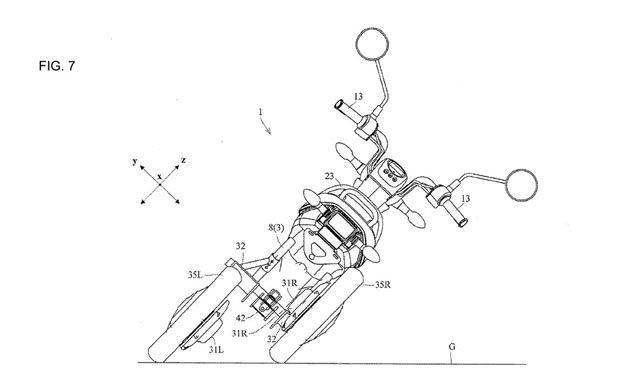

LMW Patent
Advantages of the LMW
- The right and left wheels move independently giving the vehicle excellent shock-absorbing capabilities. At the same time, reducing the chance of front end slippage.
- LMW delivers stability and agility on the go.
Later due to increase in demand, we saw a change in Yamaha’s attention towards 50cc scooters.
However, the LMW concept did not fade away.
Tesseract is born
As time passed the year, 2007 arrived Yamaha’s originality emerged in a new form.
It was a four-wheel concept model “Tesseract”.

Concept Tesseract takes shape.
Until now, we were looking at the LMW concept in a more crude form. At the Tokyo Motor Show in 2007, Yamaha brought the four-wheel LMW concept known as “Tesseract”.
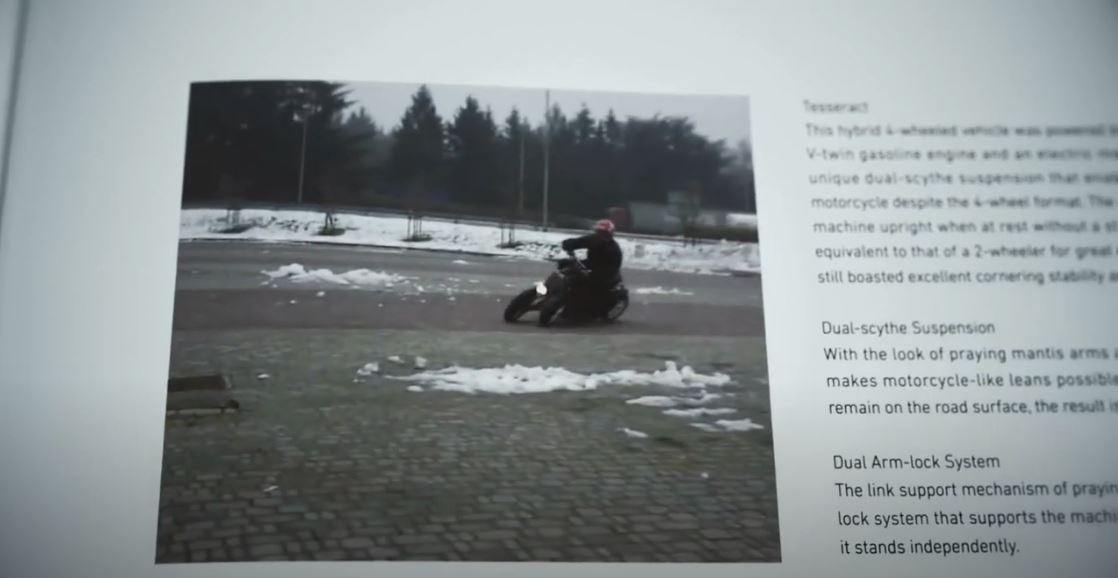
Tesseract testing in progress
The alien-looking ” Tesseract ” had hybrid drivetrain using an engine and an electric motor.
The concept had a unique suspension mechanism that allowed the machine to lean while cornering.
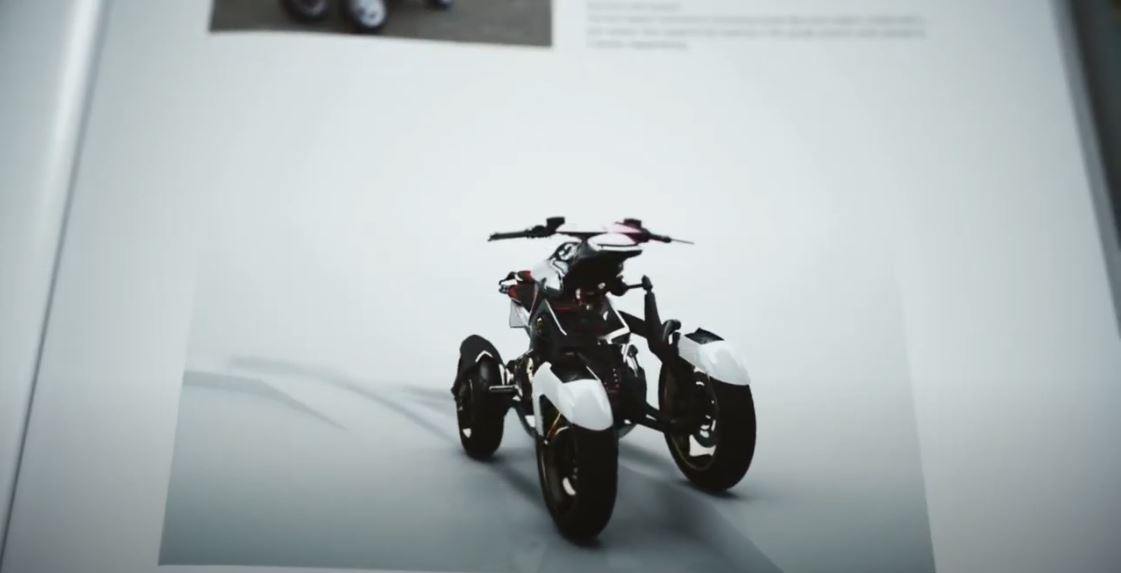
The milestone of LMW
Tesseract not only surprised the motorcycle community but also made sure it had a positive response.


Tesseract
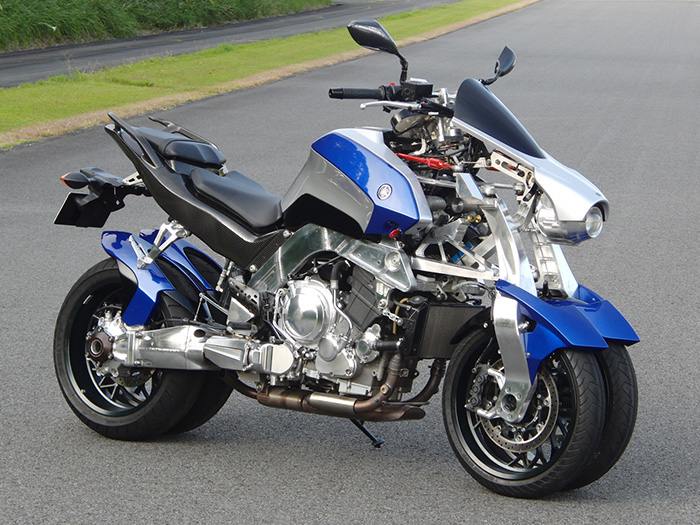
The Tesseract-based OR2T prototype
In-depth R&D
Yamaha began in-depth R&D in the LMW technology. Yamaha conducted countless verification tests for an engine power outlet, the number of wheels and their positioning, weight distribution, chassis layout and more.

R&D
The results and finding contributed to the development of conventional motorcycles.
New commuter
At the time, Yamaha had been looking to tackle chronic urban traffic congestion and solved the possibility of implementing personal mobility different from a conventional motorcycle.

Chronic traffic is the problem statement.
Among the various ideas and plans were proposed a multi-wheel model with two front wheels took the spotlight.
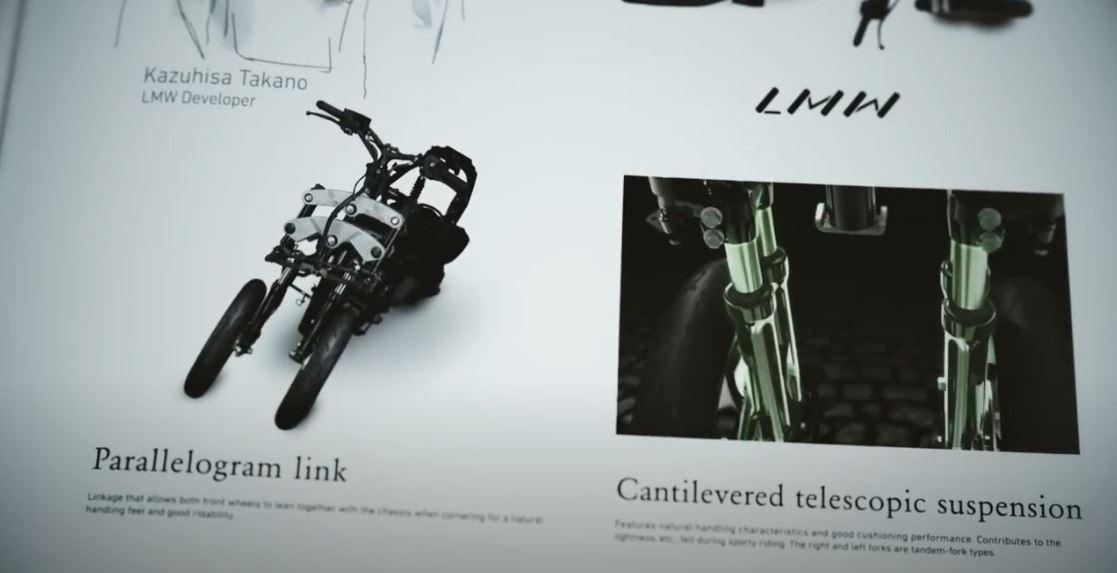
New commuter
And then in 2014 the Tricity 125 was released employing all new technology leveraging Yamaha’s years of compiled LMW R&D data.

2014 the first Tricity 125 is born
It was Yamaha’s exclusive LMW mechanism combining two technologies enabled platform subsequent dramatic progress.
Present Niken
Yamaha then launched the LMW one after another bringing new possibilities for personal mobility.
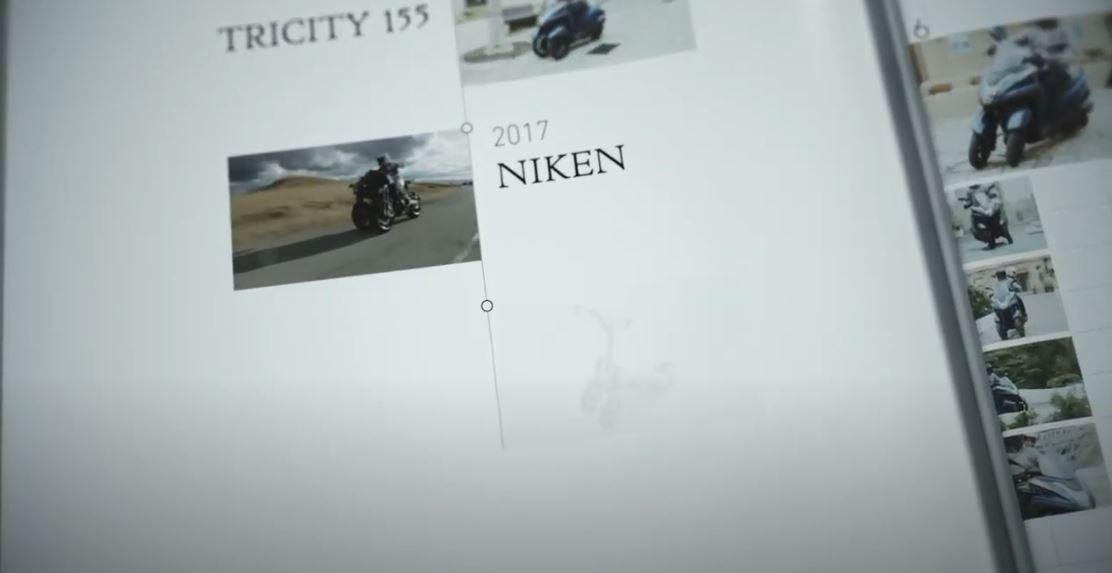
In 2017 Yamaha brings Niken.
One of them is Niken. Niken is the commercial version of the concept bike “MWT-9” announced by Yamaha in 2015. The Niken came on the scene in 2018.
The three-wheeler garnered much attention. At the same time, our Aussie correspondent owns one and has the full praise for Niken. And why not?

Our Aussie correspondent Christopher Bridges unleash the monster.
However, the 267kg monster isn’t easy to tame. It would be best if you are careful and experienced to put a leg on it.
Taming the monster
According to our Aussie correspondent, once you learn the basics, the Niken is more agile, comfortable and stable.
Yamaha Niken in action
Here is what he has to say ” I am one delighted Niken owner. Since seeing the Tesseract Concept bike, I had always been curious about how they would put the concept into practice.
Over the years many people, including Yamaha with its GTS 1000 have experimented with alternate front end designs. This machine came up at an affordable price, so I just bit the bullet and bought it.
Again Niken is out in action.
The bike is a revelation. The most polarising point on the bike is the crazy looking parallelogram front end. The is a bike where you can throw all your traditional notions of the corner to one side.
Niken brings another level of cornering. It holds any line so precise, and it dares you to try even harder. If you don’t like attention, don’t get Niken.
It gathers crowds everywhere. I enjoy the look of shock on people faces when I pass them on the road. A great state of the art machine by the tuning fork brand “.
The footage gives the perspective of Ackermann steering geometry.
The crucial Niken suspension works on the Ackermann steering geometry which you could see on the most cars.
The Ackerman steering geometry works to turn the inner wheel more progressively compared to the outer.
The 845cc motor provides 85kW (116PS) / 10,000r / min as output.
How will a future Niken look?
The future possibility of autonomous Niken or for that matter for any autonomous motorcycle is very scarce because it doesn’t make any sense.
What will you see in Niken?
- However, Yamaha may ensure the bike is well-connected to other vehicles. Like the mechanism to dial an emergency call a facility already present in few BMW models.
- You may see a radar technology in Niken pioneered by Bosch and Ducati. And Ducati was the first to push it in there Multi V4. Further, we do have an exclusive article on Why Yamaha should bring radar tech in Niken?
- Optimising route planning plus to display the crucial navigation data directly on the TFT display. The critical navigation data could be in more depth like the acceleration, lean angles, deceleration forces or altitude profiles.
- Do we see Niken going electric? You may never know as the big four Japanese motorcycle manufacturers have already built a consortium to improve electric mobility.
- What more change in shape and size? We see the present unique suspension. Which comes based on the Ackerman steering geometry takes much width. In future, we may see a more refined and optimised suspension which will be much compact.
- By reducing its weight, Yamaha may want to introduce the Niken for the more inexperienced motorcycle community. And it may well come in the form of introducing lighter carbon fibre components.
- While the present Niken looks sharp and aggressive, we could see refinements to the shape. For Niken, Yamaha could adapt the shapeshifting technology something we see on the Damon Motorcycles. The technology allows the rider to electronically move the windscreen, seat, footpegs and handlebars to accommodate different positions and conditions.
- Lastly, Yamaha may plan to bring the hybrid Niken a technology mostly researched by BMW and Suzuki. Unlike sports cars the conventional combustion engine working in tandem with an electric motor to help power the same
While the future of LMW’s, especially Niken, is bright, the present doesn’t lack expectations.




























